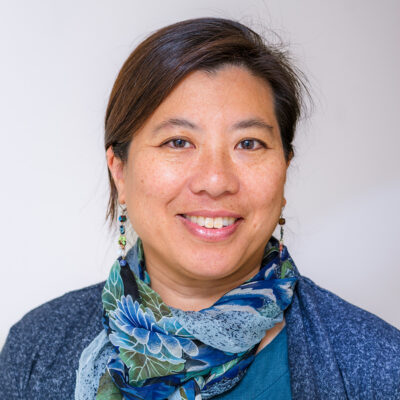Dana-Farber Cancer Institute receives $10 million gift from the Ge Li & Ning Zhao Family Foundation
Gift establishes the Ning Zhao & Ge Li Family Initiative in Nursing to advance the field of oncology nursing BOSTON - The Ge Li & Ning Zhao Family Foundation has made an extraordinary gift of $10 million to Dana-Farber Cancer Institute, the largest single gift in support of nursing in the Institute’s history. The gift will establish the Ning Zhao & Ge Li Family Initiative in Nursing, which will support oncology nursing career paths and will help build a pipeline of highly trained oncology nurses to maintain Dana-Farber’s position as a global leader in oncology nursing. The initiative will help...
Gift establishes the Ning Zhao & Ge Li Family Initiative in Nursing to advance the field of oncology nursing
BOSTON - The Ge Li & Ning Zhao Family Foundation has made an extraordinary gift of $10 million to Dana-Farber Cancer Institute, the largest single gift in support of nursing in the Institute’s history. The gift will establish the Ning Zhao & Ge Li Family Initiative in Nursing, which will support oncology nursing career paths and will help build a pipeline of highly trained oncology nurses to maintain Dana-Farber’s position as a global leader in oncology nursing. The initiative will help ensure Dana-Farber's model is sustained, address future needs, and can be replicated across the country and globally to raise the standard of care for patients.
The gift is inspired by the personal experience of Dr. Ge Li and his late wife, Dr. Ning Zhao. Dr. Zhao, co-founder, executive director of the board and corporate senior vice president of WuXi AppTec, passed away in May 2023 after a 20-year battle with cancer. She was an extraordinary scientist, business leader, and philanthropist with an unwavering commitment to improving human health, including supporting cancer research and fostering future leaders to create new treatments and cures to benefit patients around the world.
“Dana-Farber continues to lead the way in the field of oncology nursing,” said Dr. Ge Li, President of the Ge Li & Ning Zhao Family Foundation. “With this gift, we seek to honor Ning’s legacy by supporting Dana-Farber’s key initiatives in oncology nursing education and training, while also ensuring the field of oncology nursing continues to grow to provide greater care for future cancer patients across the globe.”
As hospitals in the United States do not receive federal funding to train registered nurses, this gift will help reduce barriers to entering a career in oncology nursing and strengthen preparation and training, as well as support career advancement, retention, and the professional development of nurses. By preparing the next generation of nurses to enter the field and make a difference for individuals with a cancer diagnosis, Dana-Farber maintains the highest quality of care for these patients while also contributing to the field more widely. Nursing has been an integral part of Dana-Farber’s excellence for its 75 years, as part of Sidney Farber, MD’s core philosophy of “Total Patient Care,” in which all patient services are cared for by a team of interdisciplinary professionals to meet all of their needs throughout the cancer care continuum.
The American Nurses Credentialing Center (ANCC) has awarded Magnet® status to Dana-Farber Cancer Institute, recognizing excellence in nursing practice and patient care. Looking ahead, Dana-Farber is expanding its career development initiatives and ensuring that the field of oncology nursing continues to grow to care for the next generation of cancer patients, establishing a model in nursing excellence to benefit patients at Dana-Farber and beyond.
“This gift will provide critical resources that bolster Dana-Farber’s training and nursing career development, widen and diversify the workforce of nurses, and ensure nurses are well-equipped for the distinct challenges of caring for patients with cancer. With the help of the Ning Zhao & Ge Li Family Initiative in Nursing, Dana-Farber will continue to engage the brightest, most talented, and most compassionate experts to care for patients,” said Laurie H. Glimcher, MD, president and CEO of Dana-Farber and the Richard and Susan Smith Professor of Medicine.
One component of the Ning Zhao & Ge Li Family Initiative in Nursing is the establishment of the Ning Zhao Chair of Nursing, the first endowed nursing position of its kind at Dana-Farber. The first incumbent is Chief Nursing Officer Anne Gross, PhD, RN, FAAN, who first joined Dana-Farber in 2002 and became Dana-Farber’s senior vice president for patient care services and chief nursing officer in 2016. This named chair will provide Gross with critical resources needed to continually innovate in the area of patient care and advance the field of oncology nursing.
“I am honored to be named the first Ning Zhao Chair of Nursing,” said Gross. “This transformational gift will enable us to build the pipeline of registered nurses for the future, through training programs that will support us to achieve our goal of providing the highest quality care while maximizing each patient’s quality of life throughout treatment.”
The gift will also establish the Ning Zhao & Ge Li Endowed Scholarship Fund for Clinical Assistants, which will provide support for clinical assistants employed by the Institute who are currently in nursing school. The goal of this fund is to ensure individuals can pursue their education with less of a financial burden, helping to clear a direct path for them to enter the field as nurses after graduation, expanding a diverse pipeline of nurses and strengthening the Dana-Farber nursing community.
The third component of the gift will help build the Ning Zhao & Ge Li Simulation Center located at 10 Brookline Place and scheduled to open in Spring 2025, as well as support the initial years of its operation. The center’s goal is to provide a state-of-the art clinical environment to train nurses on key technical nursing skills, including starting IVs, administering chemotherapy and preparing for emergency scenarios. It will also serve as a lab for skill building and practice navigating challenging and complex patient scenarios. This center will help ensure that the nursing needs of patients and their families are met today and in the years ahead through world-class, compassionate oncology care.
The Ge Li & Ning Zhao Family Foundation gift is part of The Dana-Farber Campaign, the multi-year fundraising effort to prevent, treat, and defy cancer by accelerating revolutionary science, extraordinary care, exceptional expertise, and essential opportunities.
About Dana-Farber Cancer Institute
Dana-Farber Cancer Institute is one of the world’s leading centers of cancer research and treatment. Dana-Farber’s mission is to reduce the burden of cancer through scientific inquiry, clinical care, education, community engagement, and advocacy. Dana-Farber is a federally designated Comprehensive Cancer Center and a teaching affiliate of Harvard Medical School.
We provide the latest treatments in cancer for adults through Dana-Farber Brigham Cancer Center and for children through Dana-Farber/Boston Children’s Cancer and Blood Disorders Center. Dana-Farber is the only hospital nationwide with a top 5 U.S. News & World Report Best Cancer Hospital ranking in both adult and pediatric care.
As a global leader in oncology, Dana-Farber is dedicated to a unique and equal balance between cancer research and care, translating the results of discovery into new treatments for patients locally and around the world, offering more than 1,100 clinical trials.
About Ge Li & Ning Zhao Family Foundation
The Ge Li & Ning Zhao Family Foundation is dedicated to advancing education, scientific research, and healthcare innovations to achieve meaningful improvements in the well-being of humanity. The Family Foundation was created in 2020 through the generosity of Dr. Ge Li and the late Dr. Ning Zhao, co-founders of leading global service platforms for drug research, development and manufacturing that enable innovators to advance breakthroughs for patients worldwide. The creation of the Family Foundation was inspired by that mission. Through philanthropic efforts and collaborative partnerships, it seeks to make tangible impacts and foster transformative change to improve the lives of all.








